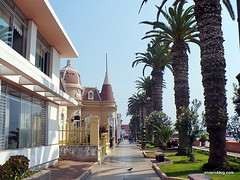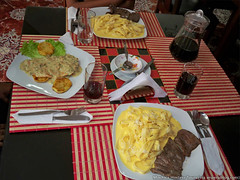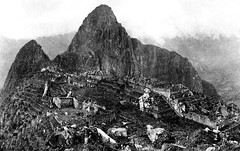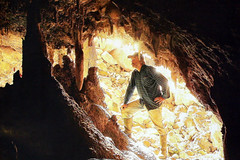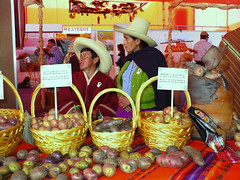Ruins of Maucallacta
Six hours from Arequipa, on the route to the Coropuna volcano, are the ruins of an ancient ceremonial centre eventually assimilated by the Inca Empire. Today, Polish and Peruvian archaeologists, with the help of locals, are restoring what is truly a lost treasure.
 Beneath the sacred Coropuna volcano that is permanently covered by ice and now, perched on a hill above a valley, the ruins of Maucallacta are slowly being restored. If archaeologists continue building up its towering walls at this pace, we may soon see the return of pilgrims to this mysterious place.
Beneath the sacred Coropuna volcano that is permanently covered by ice and now, perched on a hill above a valley, the ruins of Maucallacta are slowly being restored. If archaeologists continue building up its towering walls at this pace, we may soon see the return of pilgrims to this mysterious place.
“All this was a temple,” explains Maciej Sobczyk, one of the Polish specialists working on the recovery of the site. Maucallacta was a great architectural complex of at least one hundred buildings, houses and large shelters around the main temple. Its origin pre-dates the Incas, although by looking at its walls it is clear it became a important Inca ceremonial centre – among the five architectural styles found in this complex that covers 50 hectares and was used for a span of 300 years, is some of the finest brickwork from Cusco.
Although many explorers have visited Maucallakta, work to conserve it only began in 1997 with the arrival of a joint team from the University of Warsaw and the Catholic University of Santa Maria from Arequipa. “We did some small scale work, little jobs that made us familiar with the site”, recalls Sobczyk, a member of the Polish mission who lectures on Inca architecture at the University of Warsaw. Over time the importance of this centre of worship throughout the region became clear. The specialists, headed by the eminent archaeologist Mariusz Ziolkowski, concluded that this was the place that some Spanish chroniclers recorded vaguely as a centre of worship of the snowy Coropuna area.
Spaniard Pedro Cieza de Leon wrote, “The kings of Peru, with their noblemen, visited this temple to make offerings of those that I state; for it is very true that from the burials in this temple we had much gold, silver and precious stones”.
The name Maucallakta is not mentioned in any Spanish tale. In Quechua it means Old Town and is very ambiguous. “When a site’s name is forgotten, it too becomes forgotten”, says Sobczyk. There are two other places called Maucallacta in the area, but this, near the district of Pampacolca, is certainly the most prominent. Over the past three years, the joint team has worked on a project to assess the site’s value as a tourist attraction. Early results are impressive.
The complex boasts three well-defined levels. A circuit of staircases connect various sectors that are divided by level of importance, to be accessed by those of sufficient importance. The common area is at the bottom and has a 52 metre façade with traces of five gates. “It was a monumental house”, tells Sobczyk. The building, now consisting mostly of its foundations, was a hostel for pilgrims. Here you’ll also find a main square, measuring 150 metres long by 50 metres wide. “About five thousand people could meet and talk here”. This square is raised 7 metres high, and under it hides a surprise – a series of tunnels that by-pass it, perhaps for use when the plaza is full. Such a design has not been seen elsewhere in Andean architecture.
Steps lead up to the main area, a mausoleum. It is a rectangular building with four rooms, including a lobby and a chamber in which mummies were placed. Excavations have found that offerings were left in the corners of the lobby – the first item uncovered was a ceramic vase placed in a hollow stone. Inside might have been an offering of chicha. Bellow this item a human body was found. “It was an adult, but we are in an analysis stage and don’t yet have any other data”, admits Sobczyk.
Mysterious Maucallacta is also attracting its heirs. One group of locals have now been restoring its walls for years. Alain Cárcamo, aged sixteen, has learned to categorize pre-Columbian ceramics and is deciding what to continue studying. Sergio Huamán, just a little older at 65, is constantly surpised, while helping move the heavy stone blocks, at the amazing finds the ruins are yeilding. His community had always saw the ruins as a unimportant place. “Now we know how valuable this is,” he beams. Both are sure this is only the begining, that the magnificient Maucallacta has a long hidden history waiting to be discovered and told to the world.
Tags: Archaeology, arequipa, coropuna, incas, maucallacta, mausoleum, polish, ruins, spaniards



